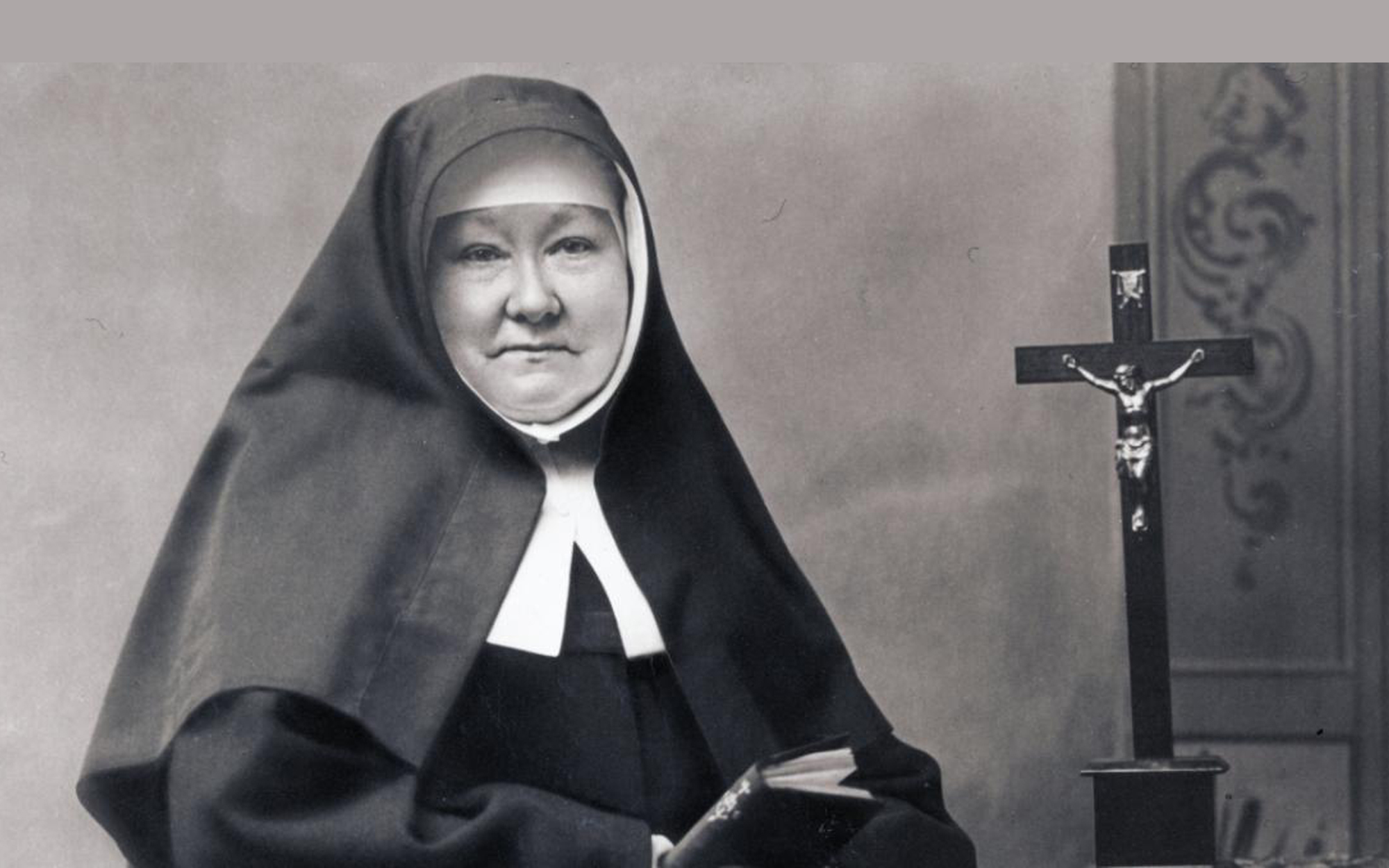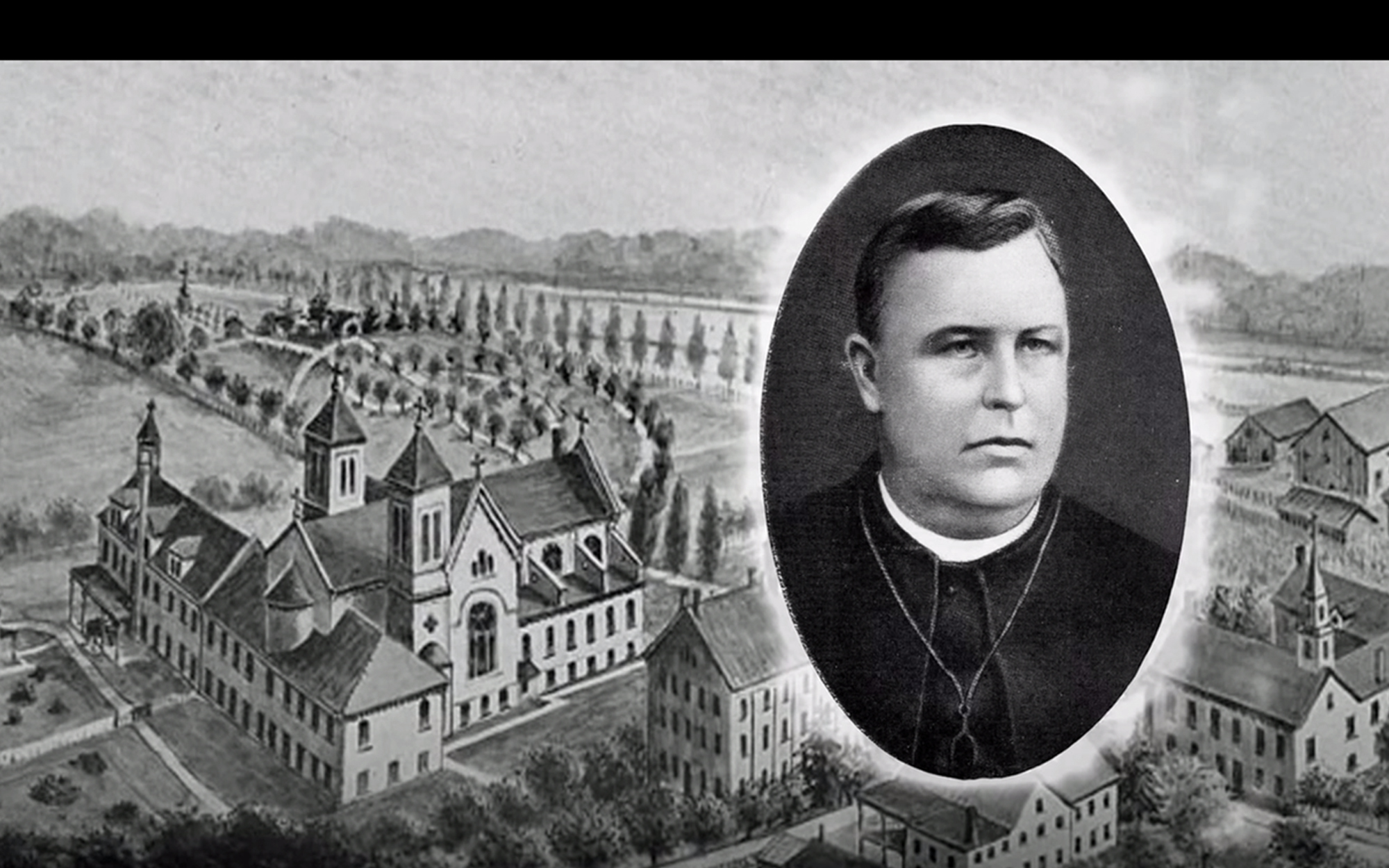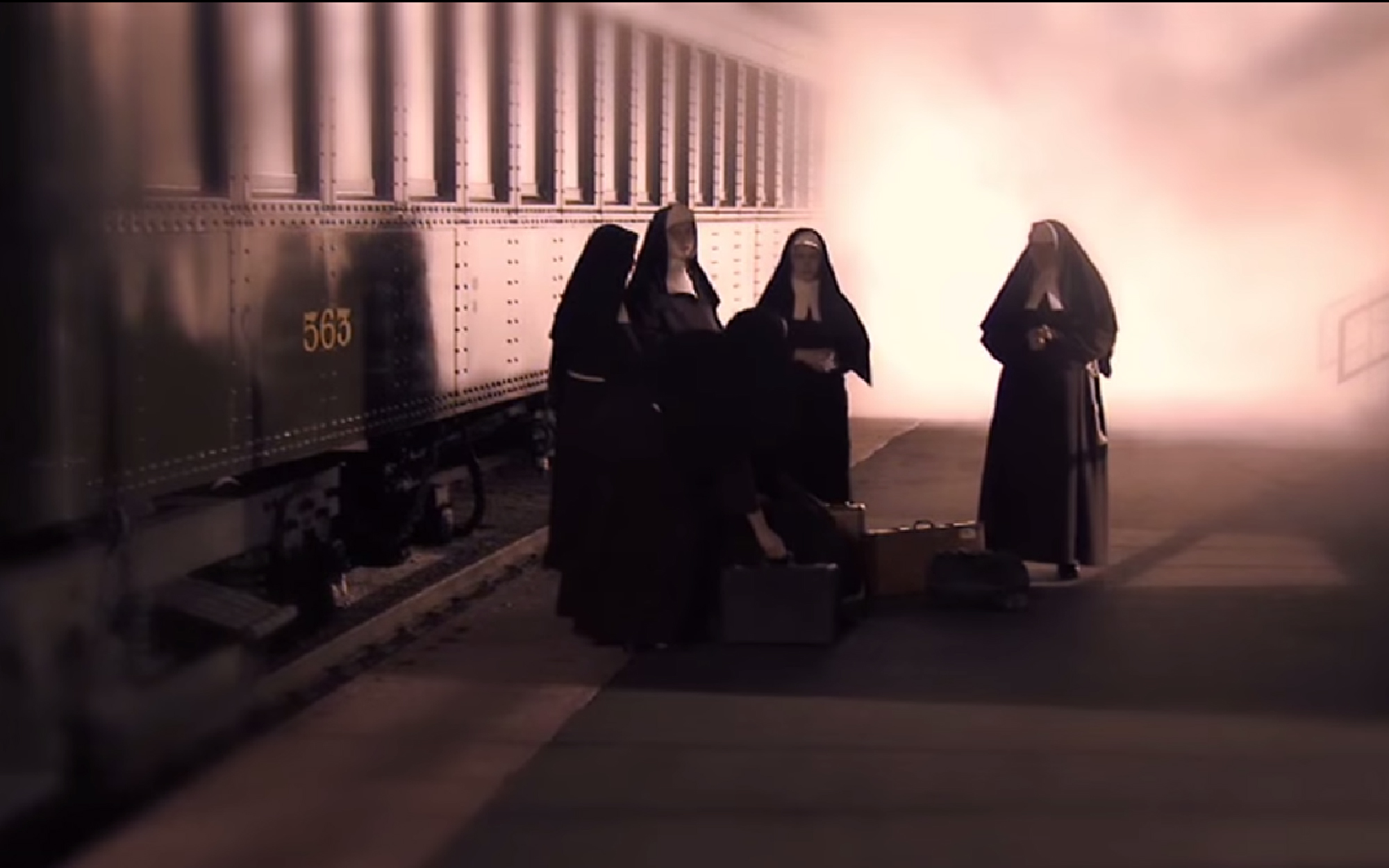The Early Years
Mother Maria Theresia Bonzel, the foundress of our Congregation, was born on September 17, 1830, in Olpe, Germany. She grew up as Aline Bonzel in an affluent but deeply religious family. She had a healthy attitude toward life and with a delightful sense of humor knew how to overcome everyday difficulties. Already in childhood she developed a pronounced inclination for all that is religious and as a young woman drawn by the spirituality of St. Francis, she became a member of the Third Order Secular.
As she neared the time for a decision about her future, it became clear to Aline that she was chosen by God for religious life. On the day of her first Holy Communion she experienced the call of grace to give herself unreservedly to Christ. Tested and matured through difficulties, she realized that God had destined her to live the life of the Gospel in a Franciscan community.
Together with Regina Löser, a childhood friend, Aline became acquainted with Klara Pfänder, a teacher, who, with permission of the Local Ordinary intended to found a new religious Congregation. Upon the urgent request of Klara Pfänder, both young ladies declared themselves willing to join her to give financial assistance to the new foundation.
Klara Pfänder with her two companions began religious life in Olpe. She submitted to the bishop the Statutes of the Congregation together with the Rule of Saint Augustine with which she was familiar. This arrangement was contrary to the previous agreement with Aline Bonzel and Regina Löser. On December 20, 1860, the investiture of the first nine took place in the parish church at Olpe.
We may attribute to the influence of Aline Bonzel, now Sister Maria Theresia, the introduction of perpetual adoration of the Blessed Sacrament into the new community, and the later adoption of the title: “Poor Sisters of St. Francis of Perpetual Adoration”. Sister Maria Theresia suffered deeply from the fact that as a “Franciscan” she had to live according to the Rule of St. Augustine, and make her own a spirituality to which she was not attracted. Her heart was often torn by doubts.

A New Community Is Formed
In 1863, with permission of the Local Ordinary, Klara Pfänder transferred the motherhouse to Salzkotten, for the reason that at Olpe the young Congregation was not permitted to care for the sick. Olpe thereby became the first mission of Salzkotten, with Sister Maria Theresia as Local Superior.
After the transfer of the majority of Sisters to Salzkotten, the few Sisters at Olpe had to live in great poverty and considerable privation. When the citizens of Olpe saw what the situation was, they voiced their objections to Bishop Konrad Martin, who intervened. To Sister Maria Theresia’s surprise, on July 20, 1863, he declared the convent at Olpe an independent community. Since then, July 20th has been considered the founding day of our Congregation.
With this episcopal decree Mother Maria Theresia, appointed the first Superior at Olpe, became the foundress of a religious Congregation. She adopted the Rule of the Third Order of St. Francis approved by Pope Leo X for those living a community life. On March 25, 1865, she submitted to the bishop the first Constitution she had written. This was approved on July 6 of the same year.
Mother Maria Theresia had finally reached the goal and ideal she had desired from her youth, namely: perpetual adoration, poverty, and a life according to the Rule of St. Francis. Not only did she endeavor to live according to these ideals, but also in deep awareness of her responsibility, she made great efforts to form her Sisters, whose number was constantly increasing, according to the spirit of the Gospel, and the example of St. Francis.
To Mother Maria Theresa, whose foremost concern was to live according to Franciscan spirituality, and especially to foster perpetual adoration of our Lord in the Blessed Sacrament, it was without question that true love of God becomes visible and credible only in sincere love of neighbor. Accordingly, she endeavored to undertake works that corresponded to the spirit of St. Francis, in order to combine contemplative life with apostolic love. Her first apostolate was care of the orphans and the home nursing care of those who could not afford to be hospitalized.
God’s blessing was visibly with Mother Maria Theresia. The number of sisters grew steadily, so that health care in hospitals and other charitable works could be undertaken. In 1868 the foundress opened a school of higher learning in Olpe to give talented young ladies of the surrounding region the opportunity to advance themselves in society. Although Mother Maria Theresia readily responded to immediate needs, she planned the expansion of her community with greatest care in order not to overburden the Sisters. Most of all, she was concerned that their spiritual life would not suffer. A few years after the founding of the Congregation, missions could be opened within and beyond the confines of the diocese.
A New Mission In America
The quiet growth of the Congregation was suddenly interrupted by the rising Kulturkampf, a widespread anti-clerical reaction in Germany early in the 1870’s. Education of youth by religious communities was entirely forbidden. The practice of health care was possible only under the control of the state. Under penalty of law, the admission of new members to the community was prohibited.
Undaunted, Mother Maria Theresia accepted the invitation of Bishop Joseph Dwenger to establish a convent within his diocese of Fort Wayne, Indiana.

On November 25, 1875, six pioneer Sisters embarked for the United States to open a convent at Lafayette, Indiana. Within weeks a temporary hospital was organized and the poor and sick of the area began receiving the healing ministry of the Sisters.

In 1876, St. Elizabeth Hospital was dedicated. A section of this building was occupied by St. Francis Convent.
Year after year Mother Maria Theresia sent Sisters across the Atlantic along with candidates who could not be admitted to the community in Germany.
Soon many young ladies joined the congregation, causing a rapid expansion in the United States. The Sisters opened schools and hospitals, cared for the aged and for orphaned and neglected children and undertook missionary work among the Indians. These Sisters, who were separated from their foundress by an ocean, felt her special solicitude and love proven by her frequent visits and numerous letters.
Our Congregation began to blossom anew in Germany with the termination of the Kulturkampf in the 1880’s. despite the interruption of more than ten years, the number of Sisters increased rapidly and Mother Maria Theresia could plan new foundations. The size of the congregation and the large number of houses in the United States and Germany necessitated the division into two provinces; the German Province with the Motherhouse in Olpe, Germany, and the American Province with its Provincialate in Lafayette, Indiana. The German Province was placed under the protection of the “Sacred Heart of Jesus,” and the American Province under the patronage of the “Immaculate Heart of Mary.”
The Congregation continued to grow and further missions could be founded. On April 13, 1897, in view of the spirit and apostolic commitment of the Sisters, Pope Leo XIII issued a Decree of Commendation.
In order to unite her foundation more closely with the worldwide Franciscan family and thus visibly express her love for St. Francis, Mother Maria Theresia obtained the aggregation to the First and Second Orders in 1904.
Through the Decree of January 31, 1931, our community received the acknowledgment as a Congregation of papal rights.
Foreign Missions
The spirit that imbued Mother Maria Theresia remained active after her death. Her zeal, which had embraced all needs of the Church in loving concern, endeavored to spread the Gospel in mission lands. Although she did not see the complete fulfillment of this wish during her lifetime, the Congregation, only a few decades after her death, undertook missionary work in the Philippines, Brazil, and Honduras.
In 1962 the Immaculate Heart of Mary Province opened it first foreign mission at Baybay on the island of Leyte in the Philippines. The growing number of Sisters in the Philippines made possible the establishment of the Immaculate Conception Province in 1993.

The Sisters of St. Francis of Perpetual Adoration still strive in their various apostolates to combine the contemplative life with the active, in Perpetual Adoration of the Blessed Sacrament and in selfless service to others in works of mercy. The Sisters endeavor to live in a Franciscan spirit of humility, joy and compassionate love for all.
